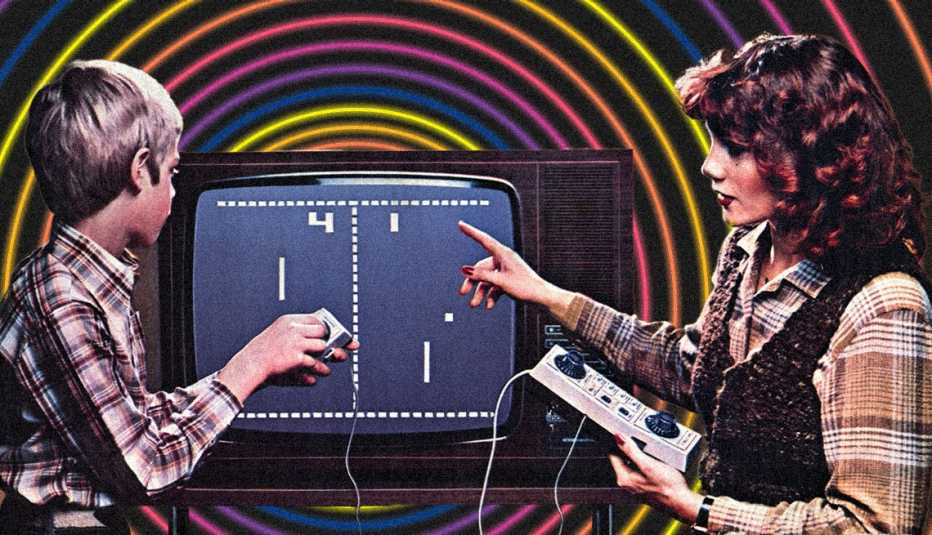Staying Fit


With a half-century’s hindsight, the video game Pong looks primitive. The table tennis game from 1972 consists of two paddles, a square ball, a score counter, and some canonical bleep and bloop sound effects — and many decades later, it still frustrates and delights. Its humble beginnings and simple graphics notwithstanding, Pong was revolutionary: It kick-started the multibillion dollar home video game market.
It might then be surprising to find out that the idea for Pong was once called “a throwaway.” The cofounder of Atari (previously called Syzygy), Nolan Bushnell, wanted his first hire, Allan Alcorn, to learn the company’s proprietary technology for an earlier video game called Computer Space, a space combat arcade game developed in 1971. It featured a player-controlled rocket maneuvering around flying saucers and was designed in a custom futuristic fiberglass enclosure.
Simple to Learn, Hard to Master
Bushnell is still gaming, with a focus on stimulating the brain.
Atari cofounder Nolan Bushnell is still interested in video games, but is using them as an interactive tool to facilitate learning as we age. He’s on the board of Anti-Aging Games.
“How do you build your brain?” Bushnell asked when beginning the research that led to Anti-AgingGames.com. “Because we can’t help but get older, but we can maybe keep from getting dumber.”
Currently he’s developing an educational company called Lernip and companion book called Lernip: The School of the Future. “It’s kind of a combination blueprint and manifesto of how we can fix education in the world,” Bushnell says. “If we can fix education, I think we can fix the world.”
“The technical term for it is a state machine, in which everything was basically driven by counters and flip-flops and Boolean gates,” Bushnell says. “For example, if you wanted to change anything in the game, you actually had to change the circuit. There was no software involved.” As a training exercise, Alcorn was instructed to design a table tennis game for the state machine
The prompt for Alcorn came after Bushnell researched whether they had any competition. The Magnavox Odyssey, the first commercial home video game console, premiered with 12 games, one of them being a primitive table tennis game. Like many creatives, Bushnell had a working list of game ideas — and ping pong was one of them.
“When I looked around, people were kind of having fun with what I considered this game that was clearly inferior to our technology. And so I thought it would be a good training objective for [Alcorn],” Bushnell says. “I felt that a simple game would allow him to learn this new technology. It was a new way of thinking, really. State machines weren’t taught in college.”
Alcorn got to work: “It was the very simplest video game one could ever think of. I made it as playable and as fun as I could.” The prototype was set in a cabinet designed by Atari cofounder Ted Dabney. Bushnell, having been the manager of the games department of an amusement park, instinctively knew this new kind of game could be monetized: “It was a very small step for me to think that if I put a coin mech on one of these monitors that it would make money.”
Atari soon test-marketed Pong by installing it in Andy Capp’s tavern in Sunnyvale, California, a local bar owned by a friend. Bushnell soon got a call telling them the game was broken. “Three days later the mechanism jammed because the coin box completely filled up,” Bushnell said. “So, when we first heard that the game was broken we were worried, but it was the kind of broken that we were glad we had.”
Alcorn was blown away by the response: “Very much to my surprise, it became a hit right away. I’m blessed by having the opportunity to create something that changed the world a little bit, you know?”


































































You Might Also Like
Free Books Online for Your Reading Pleasure
Gripping mysteries and other novels by popular authors available in their entirety for AARP membersMore Members Only Access